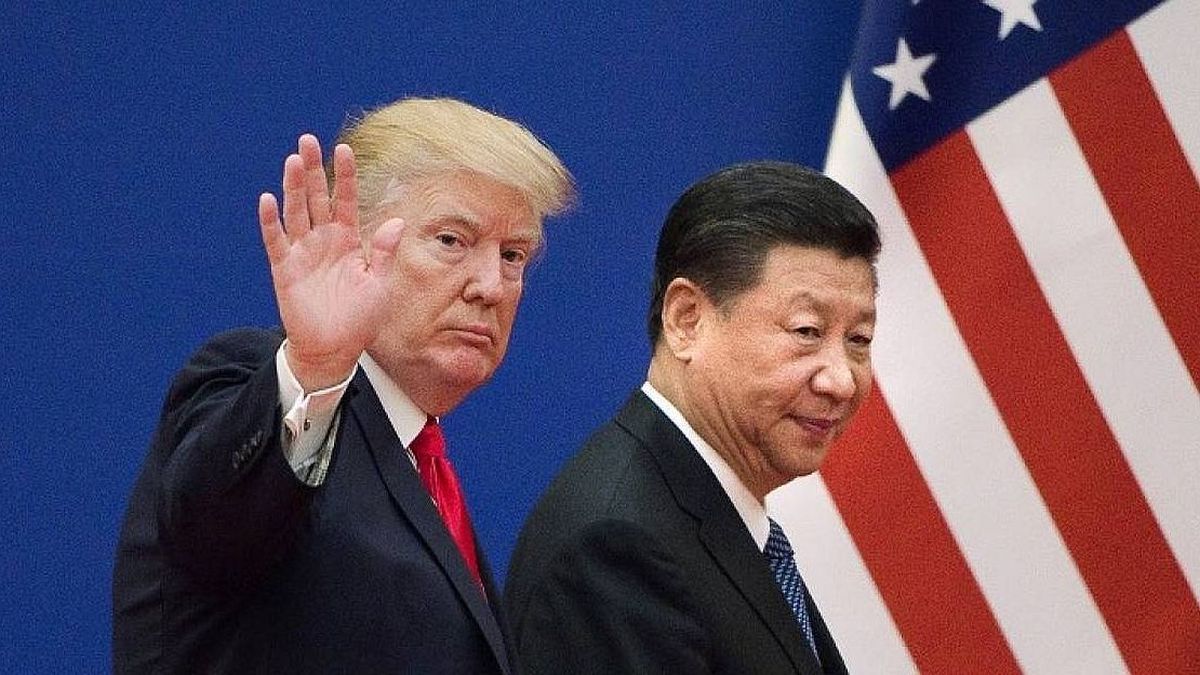One of the most shocking data was the year -on -year collapse of 34.5% in Chinese exports to the USwhich were located at US $ 28,800 million. This fall represents the greatest setback since February 2020 and deepens the contraction already registered in April, when the decrease was 21%. On the side of imports from the United States, there was also a strong setback, of 18% year -on -year.
These numbers clearly reflect that the Commercial War promoted by Donald Trump’s administration It still has structural effects on bilateral trade, despite the recent attempts of both parties to resume the dialogue. The meeting of representatives of both countries in London this week once again puts the issue on the table, although analysts consider that positions are still too rigid to anticipate a specific advance.
A commercial balance of China that surprises
At the aggregate level, Chinese foreign trade showed some nuances. Although the Total exports grew by 4.8% year -on -year in Maythat growth was less than 5% planned by analystswhich suggests a mild but sustained deceleration. On the other hand, the General imports fell 3.4%accumulating three consecutive months in negative terrain and revealing a weakness of domestic consumption and industrial demand.
However, the commercial surplus reached US $103.200 million25% more than the previous month and the highest level in four months, exceeding market forecasts. This suggests that, despite tensions, China continues to hold a positive balance thanks to the export thrust to other destinations and the fall of its external purchases.
From ING they argue that “May data continues to reflect the impact of the period of maximum tariffs” and estimate that the growth of exports to the United States could show a Gradual recovery in the coming monthsespecially if some companies advance orders to the Fear of a new cycle of tariffs.
Trump Xin China Tariff
Exports to the US fell in May due to the commercial war
Stagnant inflation: fourth month in negative terrain
In the internal front, inflation figures also reflect a little encouraging panorama. He Consumer Price Index (CPI) registered a fall of 0.1% year -on -year in May, marking the fourth consecutive month of deflation In the Asian giant. Although the data was in line with what was expected, worries the persistence of the phenomenonwhich reflects the stagnation of domestic demand.
The underlying inflationwhich excludes food and energy, rose 0.6%, its highest level since January, indicating that there is a slight price pressure in some sectorsbut still far from the levels that would point to a robust recovery.
Even more worrying is the behavior of Producer Price Index (IPP)that accumulates 32 consecutive months in contraction. In May, it registered a fall of 3.3% year -on -year, deeper than planned by analysts, who expected a 3.2% decline. This fall reflects a persistent weakness in industrial sectors and a bearish pressure on the prices that limits the business margins.
Despite the stimulus measures adopted by the Popular Bank of China (Pboc) In recent months, the results are not yet clearly reflected in the indicators. From ING they explain that Deflationary pressures remain significantand that although there could be a rebound in the coming months, time will still be needed to assess whether the applied stimuli manages to reactivate consumption and push inflation again to positive land.
“The feeling of the consumer is still weak and the price war in sectors such as the automotive has increased the bearish pressure,” explain the strategists of the Dutch bank, which They do not rule out new rate cuts towards the last quarter of the yearAlthough they warn that the Central Bank could choose to have a clearer trend before acting again.
A challenging context for the second semester
The current scenario leaves China in front of A complex challenge. On the one hand, it must deal with the slowdown in internal growth and inflation that does not take off, despite stimulus efforts. On the other, it faces an external volatile context, where commercial relations with the United States are not yet stabilized and the effects of the tariff war remain latent.
The impact of these factors will be observed more clearly in the coming months, especially if the negotiations between Beijing and Washington in London achieve at least Establish a road map that provides certainty to the markets and global supply chains.
For now, the market reacts prudence and analysts agree that The Chinese economy is going through a delicate transition momentwhere the margin of maneuver for the economic authorities will depend on whether they manage to stabilize domestic demand and recover commercial dynamism in an increasingly fragmented world.
Source: Ambito




